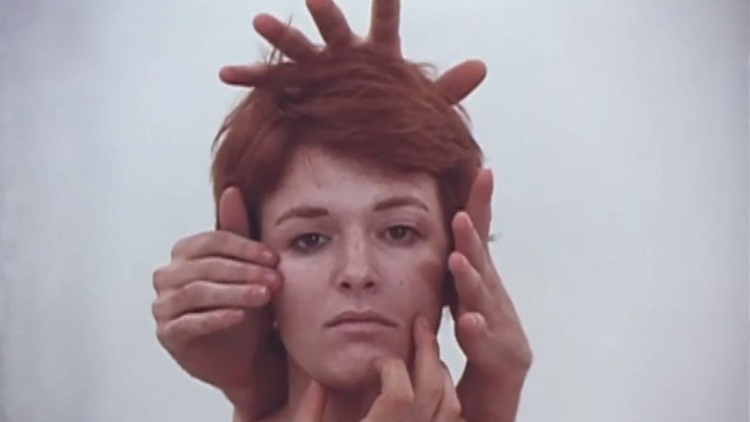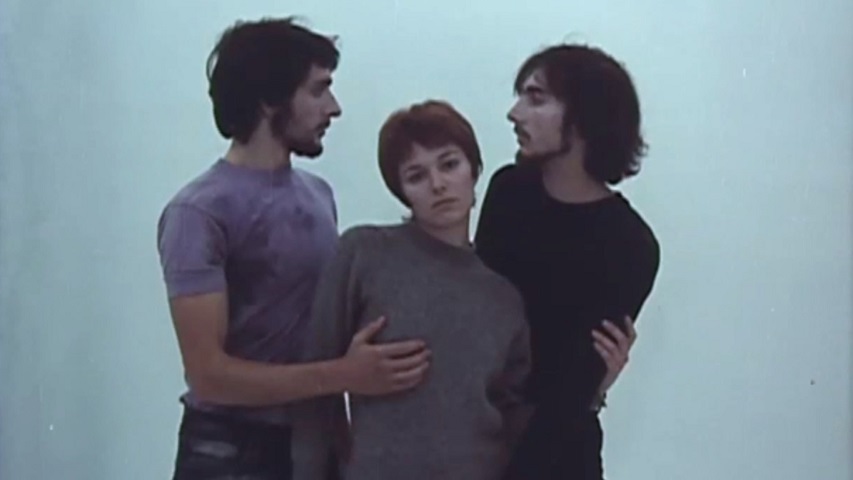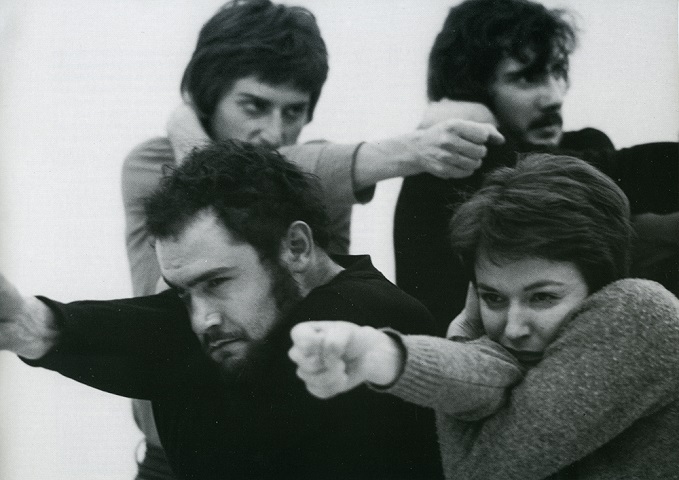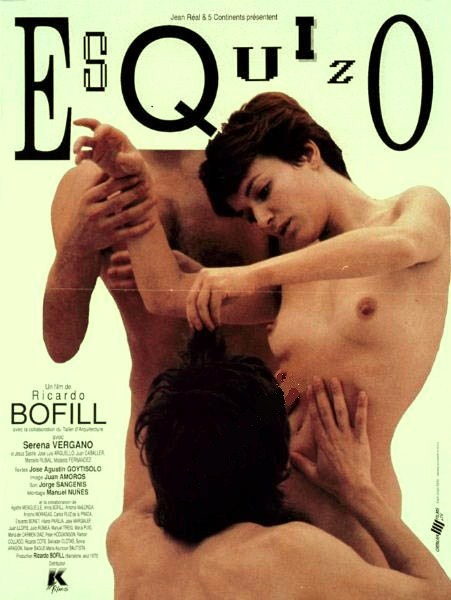Ricardo Bofill is primarily known today as one of Spain’s most renowned architects. His most famous buildings include the Xanadu and La Muralla Roja (Jess Franco fans will recognise these two buildings in many of Franco’s films). Lesser known are his contributions to the Escuela de Barcelona. He wrote the dialogue for Vicente Aranda’s Brillante porvenir (1965), appeared as an actor in BiBiCi Story (1969) and the wacky home-made short Barcelona (1967), and directed two films: the short film Circles (1966) and Esquizo, his sole feature.

The Escuela de Barcelona was a cinematic movement that occurred in Spain (more specifically, Catalonia) during the 1960’s, when the country was under a dictatorship by the Franco regime. It was inspired by the popular French Nouvelle Vague and shared many similar characteristics such as an emphasis on political commentary and redefinition of filmmaking. The Barcelona films vary in terms of genre, subject matter, and techniques. Many of the films are highly political in nature, such as Carlos Duran’s futurist dystopian thriller Liberxina 90 (1970) and Pere Portabella’s Nocturno 29 (1968).1 Other films focus on relatively mundane subject matter shot with a low-budget such as Jorge Grau’s neorealist drama Una historia de amor (1967). Then there are the Barcelona films that are primarily abstract. Bofill’s Esquizo (1970) is an example of the latter.

Esquizo (1970) takes place in a psychiatric hospital. A mental patient (Serena Vergano) is escorted into an operation theatre, where electrodes are hooked onto her scalp. Doctors dissect her brain and we enter the brain with a loud, jarring shriek. In this space detached from reality, a group of actors (Vergano, José Luis Argüello, Modesto Fernández, Jesús Sastre) perform elaborate interpretive dances. They leap about, land on top of each other, place their hands on their bodies, and form various shapes. All the while, an incoherent voice-over repeats syllables and reminds the patient that she is ill. The imagery interchanges between footage of mental patients in a dark room babbling incoherently, a game of dollar bill poker played in the sand, animal carcasses falling into a shredding machine, and the dancers performing aggressive gestures towards the camera. At the end of the film, we exit the brain. The patient returns to her cell. A lengthy text appears on the screen talking about how, with the frequent advances in technology, Man has become the new God.

Describing itself in a subtitle as “a fictitious report on the architecture of the brain”, Esquizo (1970) is largely incomprehensible when viewed without context. While described by Catalan Films as a “psychodrama in which characters stage anguish and collective desire”,2 the average viewer is likely to see this film more as a plotless mish-mash of nonsensical imagery, perhaps justified as a mental patient’s schizoid thoughts by the framing device and title. In Daniel Kasman’s coverage of the film at the International Film Festival Rotterdam 2016, he analysed the context in which the film was made, more specifically, the expression of Catalonian independence during Spain’s Franco regime. Kasman connects the incomprehensible dialogue to the population’s inability to express themselves under the regime, and how the institutions that control the population were unable to understand their suffering.3

According to an interview with Bofill, Esquizo was a ‘notebook’ on the relationship between one’s genius and madness, how talent is essentially a controlled madness and how the boundary between the two can easily blur.4 The film was made during a personal crisis, “when [he] saw that the world was very hostile, that [he] could not move forward, that it was very difficult, that there were economic, financial, legal problems and that there was a kind fighting against a barrier of the impossible”.5 Little is known about the film’s distribution at the time but apparently, an English version had been prepared for international release.6

Over the years, the elusive Esquizo (1970) has occasionally been screened at certain film festivals. Depending on who you talk to, the film is either a genius example of experimental cinema or a severe endurance test. Admittedly, when I saw this film back in 2016, I did not know what to make of it and, unable to find a tangible narrative to grasp onto, there were moments where I contemplated walking out. Indeed, during that screening, at least 50% of the audience walked out. Some left because they got impatient while others left because they were taken aback by some of the imagery. My problem with the film was that it didn’t need to be feature-length. It could have been a 25 minute short and the impact would have been the same if not greater. But at over an hour in length, many scenes went on for too long. However, considering Bofill’s intention of portraying inner madness, it is possible the editing was deliberately loose and ‘uncontrolled’ to convey this.
Despite my misgivings, Esquizo has a special place in my heart, partly due to its status as a film festival rarity, but mostly due to it being the first retrospective screening I ever attended. It is certainly one of the strangest films I have ever seen.
(Post Script: I first wrote this review back in 2017 for Robert Monell’s blog I’M IN A JESS FRANCO STATE OF MIND. After doing more research on the film, I have thoroughly revised it to provide more context and understanding.)
Sources :
1. https://mubi.com/notebook/posts/close-up-on-pere-portabella-s-nocturno-29
2. http://catalanfilms.cat/es/producciones/Esquizo
3. https://mubi.com/notebook/posts/rotterdam-2016-acting-out
4. http://cinearquitecturaciudad.blogspot.com/2018/11/esquizo-bofill-portoghesi-guarner.html
5. https://cinearquitecturaciudad.blogspot.com/2016/03/maestros-de-la-arquitectura-ricardo.html
6. https://www.enciclopedia.cat/ec-cinema-380.xml
Further Reading:
Esquizo, with its motif of interpretive dance and movement, was aptly featured on the cover of Bodybuilding, a recent book that explores the relationship between live performance and architecture. https://www.archdaily.com/930036/bodybuilding
